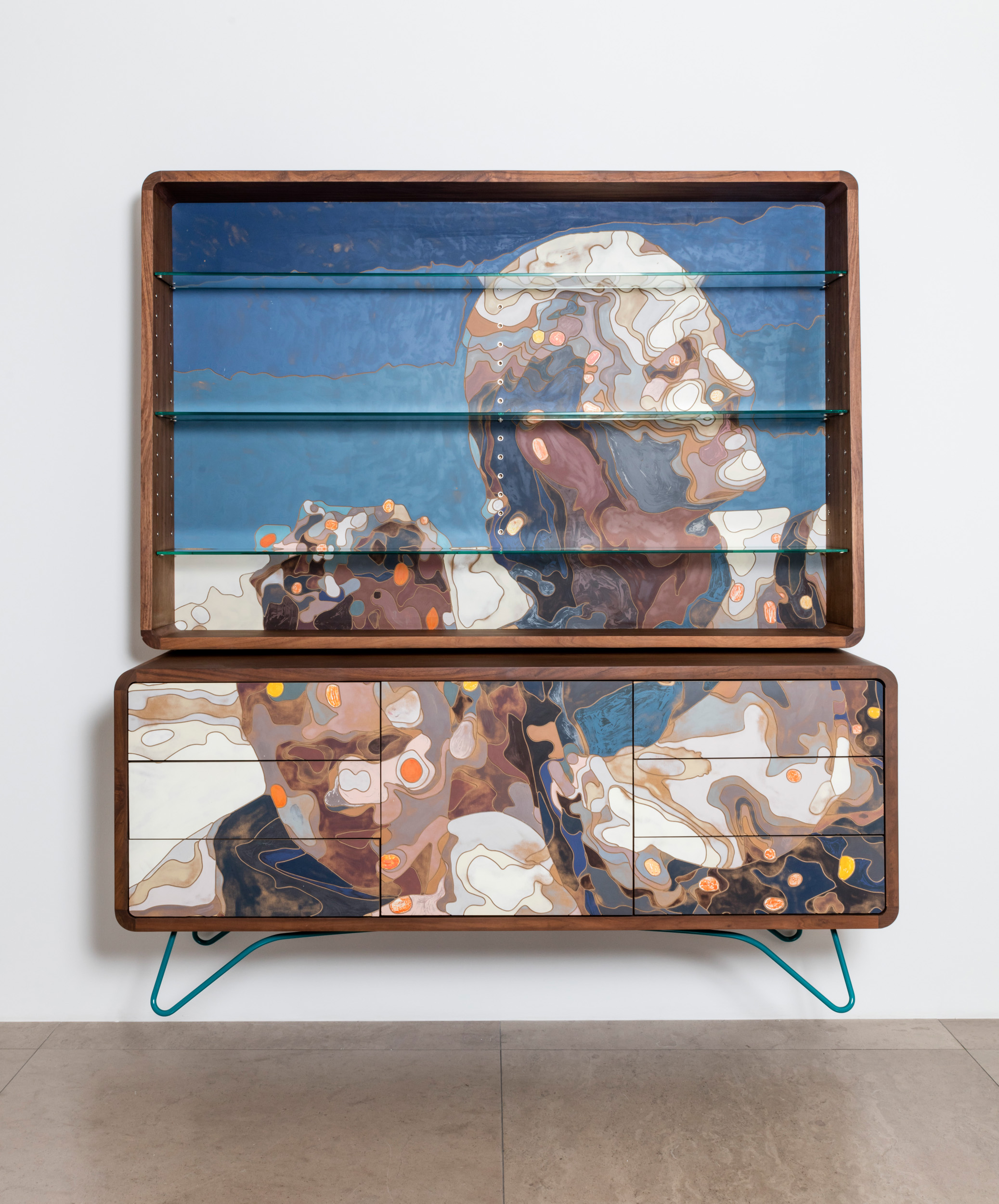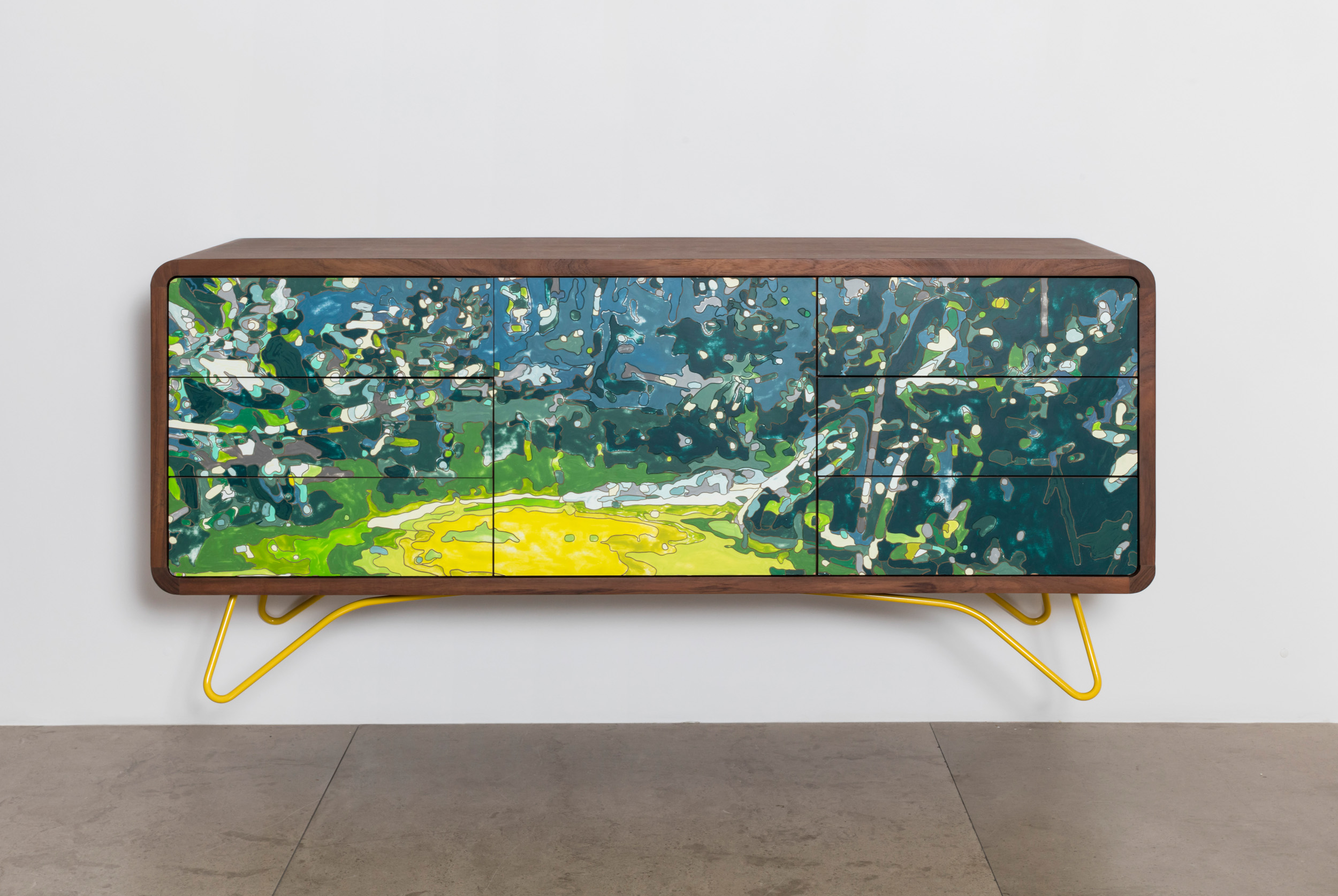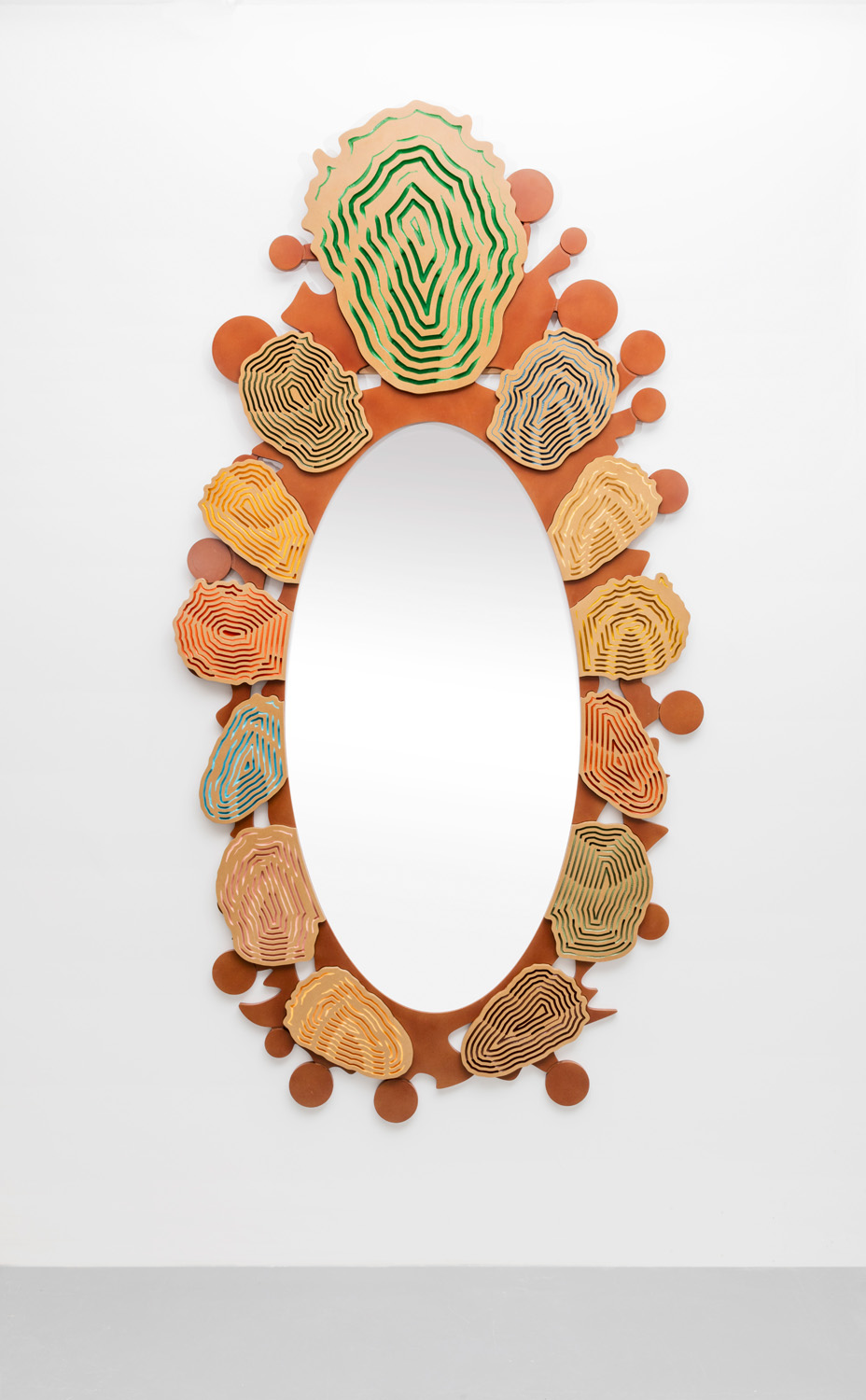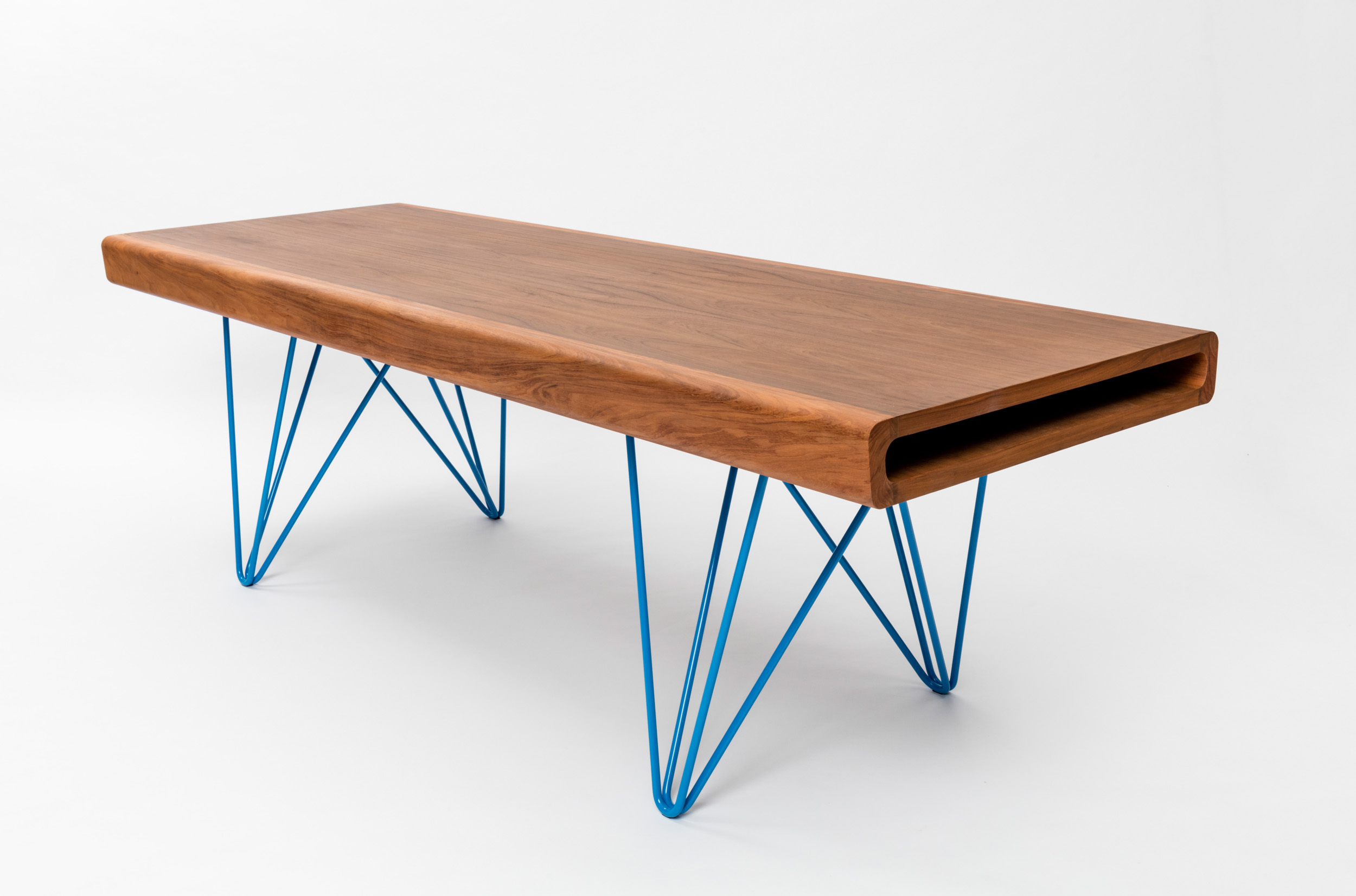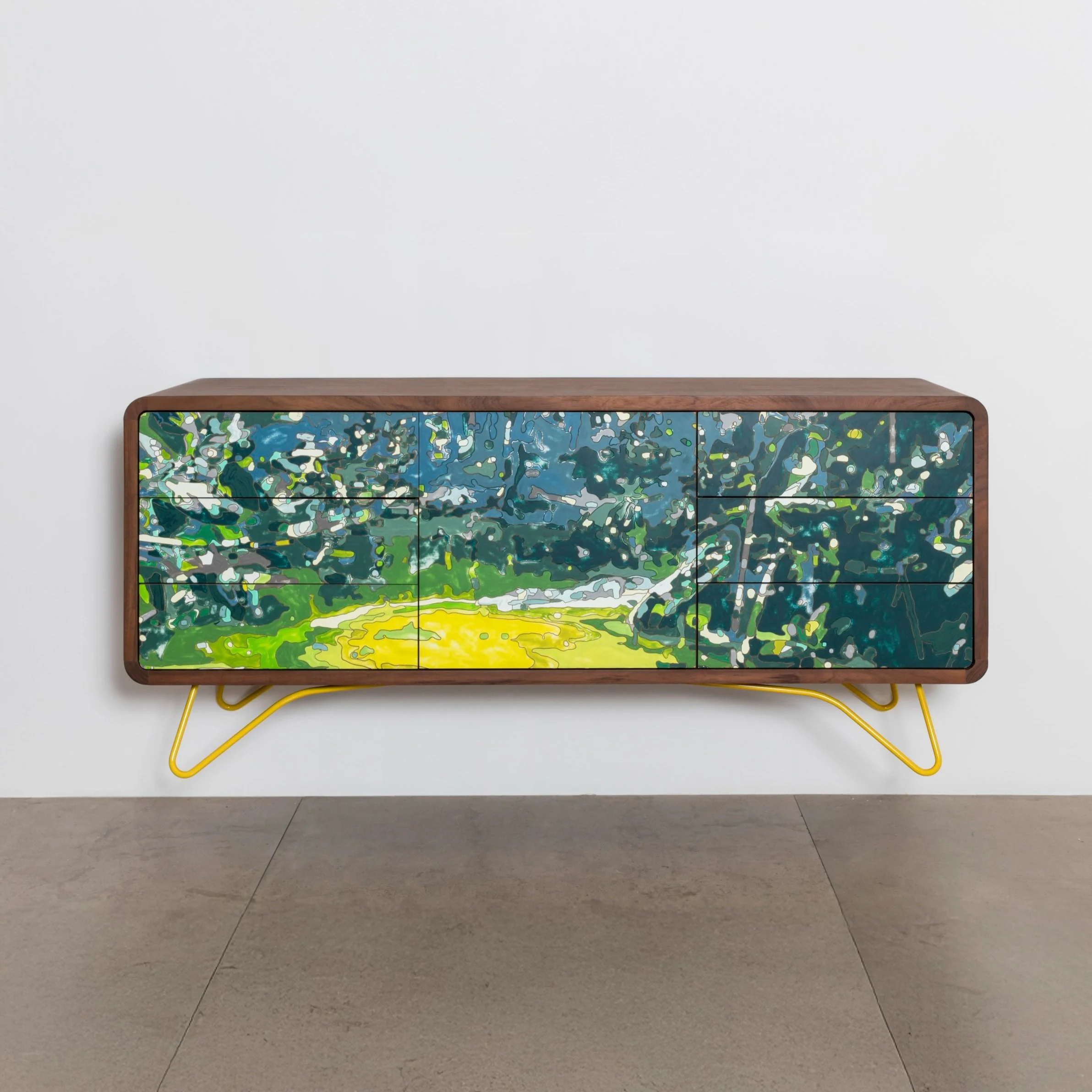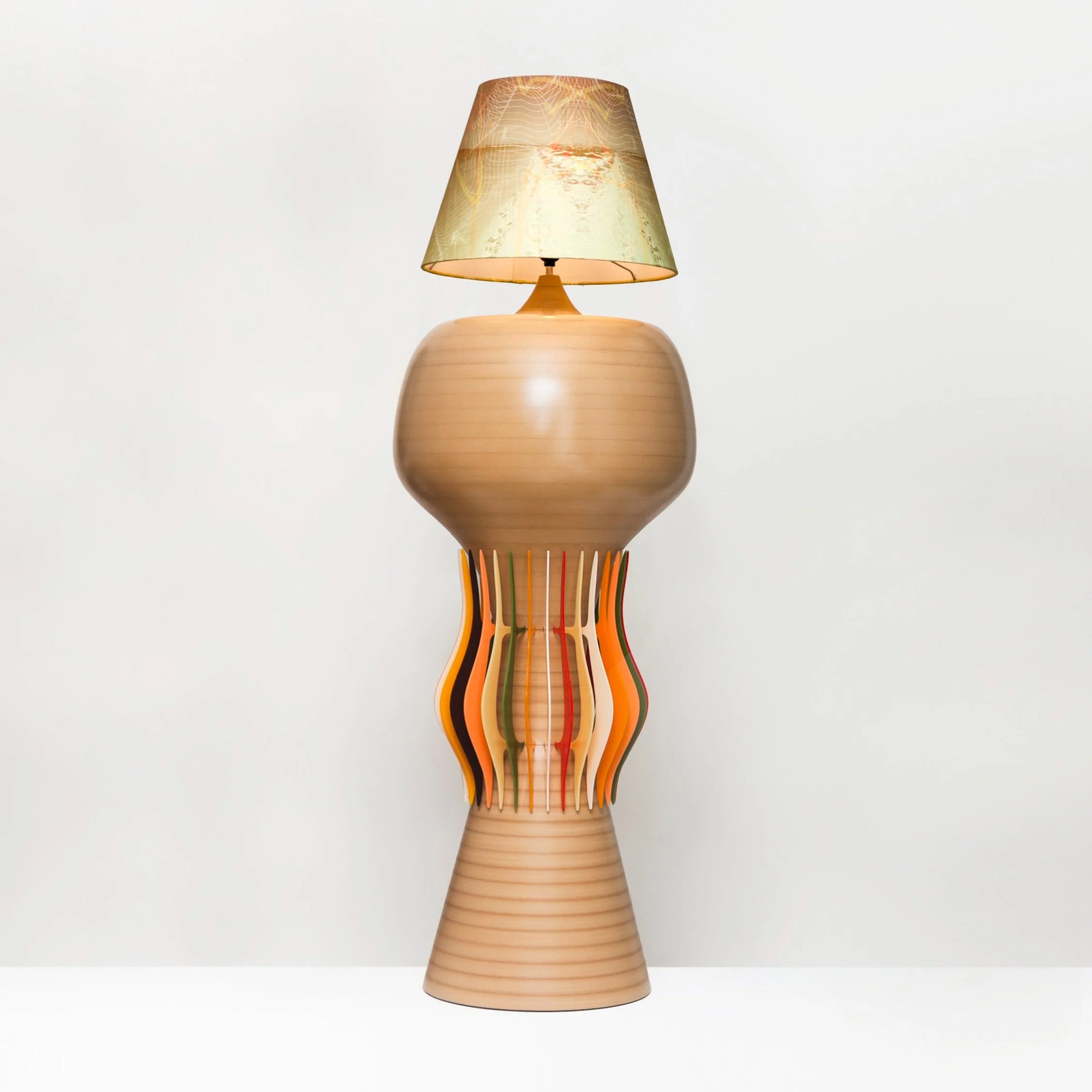JORGE PARDO
Born in Havana, Cuba, in 1963, Jorge Pardo relocated to Chicago, USA, with his family as a child and now lives and works in Mérida, Mexico. He studied at the University of Illinois, Chicago (1984) and received his BFA from Art Center College of Design in Pasadena, California (1988). After gaining his BFA, he continues to create entire living environments as well as individual works. Pardo adopts the ethos that more is more, leaning into a sense of opulence throughout his work. Pardo was among the first sculptors of his generation to embrace advanced CNC technology in his studio, allowing him to create ever more visually distinctive images and forms. The artist explains, “I work with patterns and colour – my interest is density of irregularity”, expanding his vision into a union of technology and thought. Pardo’s first solo exhibition with David Gill Gallery (2015), Meretricious, abstractly portrays the brains of some of the artists’ favourite critics, past and present, reenvisioning through cerebral scans the minds of Hal Foster, Hans-Ulrich Obrist, and Clement Greenberg in vividly colourful and sculptural mirrors. Jorge Pardo’s work has been the subject of numerous solo exhibitions at international institutional venues including Los Angeles County Museum of Art (2008); and Museum of Contemporary Art, North Miami (2007). He has been included in numerous significant group exhibitions including Spring Show, PKM Gallery, Seoul (2025); Display – between art and arts & crafts, Applied Arts Pavilion, the 57th Biennale di Venezia (2017); Soliloquies, Petzel Gallery, New York (2024); Viehof Collection: International Contemporary Art, Deichtorhallen, Hamburg (2016); Beyond the Supersquare, Print/Out, MoMA Museum of Modern Art, New York (2012); Works from the Tate Collection, Tate Modern, London (2006).
Permanent works and public projects include Pardo’s collaboration the LUMAS Foundation in the transformation of the 15th-century L’Arlatan Hotel, a historic palace once owned by the Counts of Arlatan de Beaumont (2018). Streetcar Stop for Portland, Regional Arts and Culture Council, Portland (2014); Plat 99, Bar and Lounge designed for The Alexander Hotel, Indianapolis, (2013); Tecoh, private residence, Yucatán (2012); Untitled (reinstallation of the Latin American Galleries), LACMA Los Angeles County Museum of Art, Los Angeles, US (2008); Untitled (Guadalajara Light Piece), a reimagining of the lobby and new bookshop for Dia Art Foundation Chelsea, New York, US (2000); 4166 Sea View Lane, a proposal as part of an exhibition for LA MoCA to build an artist’s house (completed in 1998) on a hillside in Mount Washington, Los Angeles, of which Pardo brought to life out of his twenty-two-page book that he conceived of as more of a sculptural creation than an architectural feat. Pardo does not consider himself an architect, as he does not use traditional architectural methodologies, but instead approaches the world of architectural design as, first and foremost, an artist.
Pardo’s sculptural and design work is part of numerous public collections including the Museum of Contemporary Art, Los Angeles; Museum of Modern Art, New York; Centre Pompidou, Paris; and Tate, UK. He has received several prestigious awards including the Smithsonian American Art Museum Lucelia Artist Award (2001); the Louis Comfort Tiffany Foundation Award (1995); and the MacArthur Fellowship Award (2010).



